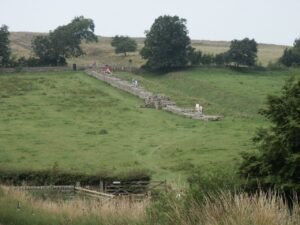Understanding the Ecological Impact of Drainage Ditches: An Empathic Perspective Introduction: A Shift in the Landscape Imagine yourself as a member of an early human community, deeply connected to the land and its rhythms. The creation of a drainage ditch is not merely a physical alteration; it’s a profound change in the environment that affects …
Category: Earthworks
Jan 23
Guide – Landscape Features: Drainage Gullies
Identifying and Interpreting Field Drainage Gullies When conducting a field walk, it’s essential to be able to identify and interpret the various types of features that appear on the landscape. One common feature you might encounter is a drainage gully—a shallow ditch or channel, often running across fields, which is used to direct water away …
Ingleborough Iron Age Hillfort
Ingleborough Hill, located in the Yorkshire Dales, is known for its prehistoric significance, particularly its hill fort. The hill fort atop Ingleborough is located at an elevation of about 723 meters (2,372 feet) above sea level, making it one of the highest known Iron Age settlements in the region.
Earthworks at Paradigm Sharpening, Nelholme, Wensleydale
In the grounds of Paradigm Sharpening, Nelholme, West Burton, on both sides of the roads are what looks like two natural amphitheatres, which may have been enhanced by the local people are used as a meeting place. I can’t find any research on this location, but it is of sufficient interest to record.
Earthwork 300m East of the Entrance to Swinton Castle
There is an earwork, approximately 300m east of the entrance to swinton castle. It is a small elongated hill, with three terraces on either side of it. It sit along in the landscape as such a feature, and the terraces seem impractactacle and redundant for crops in what is otherwise a flat landscape. It looks like a garden feature, a work of art, but it is outside of the castle grounds, and I have seen similarly carved hills elsewhere, far from stately grounds.
- 1
- 2












